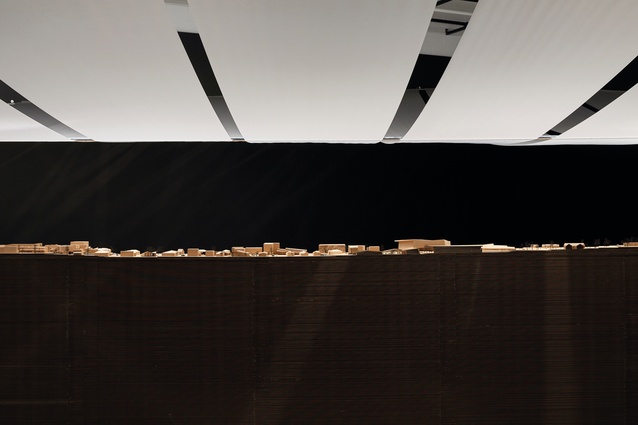Review: In Context: RTA Studio
Rem Koolhaas famously said: “fuck context”. This was surprising, especially as he is one of the most serious researchers into the circumstances surrounding his architectural projects. Maybe he thinks context is too easy a rationale and determinant of outcomes. Typically, architects seek reasons outside architecture to make design decisions – classicism used history, modernism used function and everyone uses economics. Those who are not architects imagine decisions are made by ‘inspiration’ and ‘genius’ – which some confuse with ego.
Contextualism is a seldom-articulated theory where it is assumed that any architectural intervention is always less than, and dependent on, what already exists. The idea is that the intervention fits in with what is previous. However, the architectural project inevitably changes the context – as in the Bilbao effect.
Meaning is dependent on context, with ‘out of context’ used to suggest meaning has been tampered with. Context often refers to appearance, or formal organisation, or sometimes imagery from associations surrounding the proposed project. It is always interesting that, for each project, we students and architects work with a site plan that ends at the boundaries, and it is only when it becomes necessary to publicly present that we are forced to reveal the context. We carry context around in our heads.

‘In Context’ is the name of an exhibition of the work of the architectural firm RTA Studio, founded by Richard Naish 20 years ago. The exhibition was curated by Andrew Barrie and is the work of students at the University of Auckland’s School of Architecture and Planning. It consists of more than 30 paper models of RTA projects organised along a diagonal plinth of stacked corrugated cardboard (which apparently consumed the majority of the budget).
All is uniformly brown; this contrasts with the buildings themselves, which are characterised by their variety of materials and ranges of colour, but it does recognise the strong, formal characteristics of RTA’s architecture. Lengths of white tracing paper are suspended over the models, making a fernlike pattern connecting to the room in the Ockham Gallery in Objectspace.
Barrie points out that RTA is “aggressively contemporary rather than deferential to context”. He extends the discussion to neighbourhoods in the cardboard handout, which has a map of Ponsonby with more than 20 RTA projects identified. “Where previously all of the firm’s key projects could be spotted from the top of Mount Eden, they now span the country.”
In the exhibition, they are presented with their immediate physical surroundings but juxtaposed from Auckland to Otago along the length of the plinth, with some geographic oddities. Context here is a designed landscape, complete with tiny cars, trees, people and animals. A quarter of the buildings extend off the sides of the plinth to which they are ruthlessly guillotined. This truncation does give the potential opportunity for a glimpse of the interior of the buildings – an opportunity not taken.

The context is other RTA work and it is in an RTA room in an RTA building, which can be cut out and folded up from the back of the card handout. Barrie speaks of many-layered contexts like an onion and Naish speaks of finding a patu during his childhood, which he saw as instigating his concern for layers of history, with architects as guardians of culture.
The handout says that the firm uses ley lines (‘imaginary alignments of landmarks’) to organise the relationships of the buildings to the landscape. Barrie suggests that, by linking the building “to the meaning of its context rather than its form, they have found a way of encoding architecture that maps precisely over the Māori sense of identity and position being defined by elements in the landscape”.
Ley lines, however, sound a bit sci-fi, medieval or even Greek. Barrie proposes: “This may prove to be a major contribution to the development of architecture in Aotearoa New Zealand” and has pointed out that there has been a change in architectural culture in Auckland since he was a student. Certainly, he has been at the forefront of this change in consistently promoting visiting architects, publications and exhibitions of architecture. RTA Studio is a significant aspect of this local culture.
This article first appeared in Architecture New Zealand magazine.













